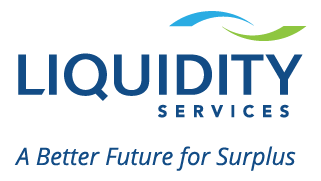
Returned goods present significant challenges for OEMs and the retailers that sell their products. Although generous return policies may bring customers to the door initially, they can also leave stores and manufacturers with the tall task of managing increasingly large quantities of returns. Reference for Business estimates that the total value of returns in the U.S. alone is roughly $100 billion per year.
With the widespread slackening of return standards, manufacturers and retailers must either accept the rising tide of returned merchandise back into their distribution channels or risk alienating their customers with stricter return policies. Retailers and OEMs can solve this dilemma by working with an expert reverse supply chain vendor that turns returns into a revenue opportunity through intelligent management.
Optimize Your Returns Program
With more and more goods being returned, the need to bolster the reverse supply chain – defined as the management and sale of surplus and returned inventory – becomes critical. Not only does returned inventory take up valuable warehouse space, but every good not sold cuts into already thin margins. Sending returns to a landfill is rarely an optimal solution either, since this would likely go against sustainability initiatives and could lead to legal repercussions for improper disposal.
In light of these consequences, it’s essential to find solutions for maximizing the use of returned goods throughout their lifecycles, whether through reselling or recycling. Yet many companies lack the resources to do this themselves.
One solution is to outsource these processes to ensure returns are managed in a way that allows retailers and OEMs to recapture the value of the goods. A reverse supply chain vendor partners with the retailer or OEM to make sure all their returned goods are accounted for and properly distributed according to agreements between OEMs and retailers. Some goods that consumers return to the retailer are then returned to the OEM (RTV), while some purchased directly from the OEM are returned to them by consumers (RMA). Some goods can be resold, while others are recycled.
Liquidity Services is a leading provider of reverse supply chain services. We manage your returns process to determine whether inventory should be shipped, disposed of, or resold for maximum recovery. By handling all related services, we streamline your returns program to reduce costs, time, and hassle. Our solutions adhere to all RTV/RMA agreements and your brand’s needs while optimizing return.
Protect Your Data
Returned consumer electronics such as smartphones and laptops may contain data if the previous owner used them before returning them. When this data is sensitive – such as a person’s private information – it should be removed before sale. Inadvertently reselling items with sensitive data can result in fines, criminal prosecution, and civil prosecution by the affected parties. Without an expert partner to identify and address data concerns, your organization is at risk.
Liquidity Services keeps your organization compliant with all data privacy regulations in the reverse supply chain, ensuring you avoid all negative consequences of data compliance violations. Data wiping counsel for all asset categories and data wiping for select asset categories – such as consumer electronics – is part of our standard operating procedure. Our methods abide by the world’s highest security standards, including Payment Card Industry and U.S. Department of Defense (5220.22m) rules.
Maximize Recovery Through a Multichannel Sales Approach
Lastly, leading reverse supply chain vendors help you take a multichannel sales approach to ensure the highest possible value for surplus products. Not every sale involves the same type of product or potential buyers, which is why multiple options for sales channels are necessary. Here are three primary channels for the resale of returned consumer goods:
1. Direct to Consumers
For certain high-value items that are in good shape, like tablets and computers, you can get the highest recovery by selling them individually to consumers. Liquidity Services offers comprehensive B2C sales solutions with the ability to provide a complete white-label experience from merchandising to customer service and fulfillment, right on your own site.

Direct sales is a popular method for B2B bulk sales of specialized products.
2. B2B Direct Sales
Through direct sales, you can target a select group of buyers for large quantities of specialized or unusual products. Direct sales allow for direct negotiation between buyers and sellers, or can take place entirely through the third party.
3. Bulk Sales via Online Auction Sites
When you have truckloads of returned inventory, you want bulk buyers. Liquidity Services provides an online marketplace, Liquidation.com, to reach professional buyers looking for goods in bulk quantities, from electronics to apparel and general merchandise. Leveraging our marketplace, you can sell surplus by the pallet or truckload via online auction for maximum recovery, or offer a “buy it now” option for your surplus to get it off your hands quickly.
***
Returns are unavoidable for retailers and OEMs. With a dedicated reverse supply chain partner like Liquidity Services, you can turn returns from an obstacle to an opportunity for adding value to your business.



Comments are closed.